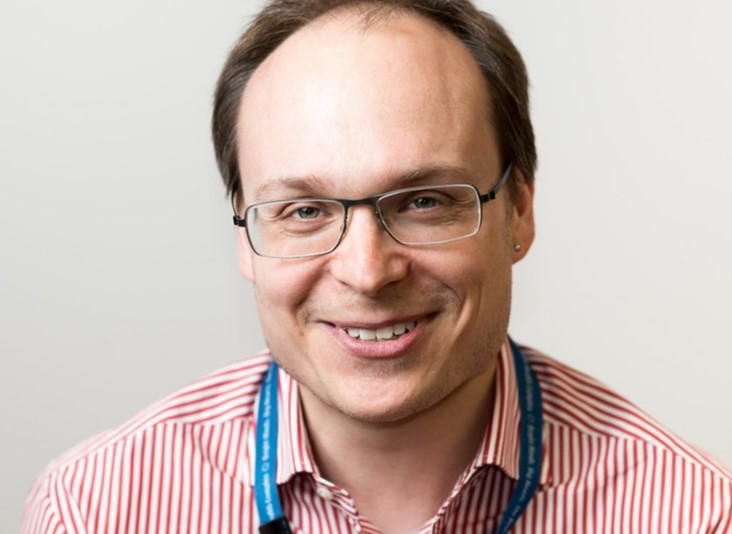“Every day in clinic, even with the best therapies, we see patients still not doing well. That is where we need to be looking,” said Dr. Sam Saibil, medical oncologist at Princess Margaret Cancer Centre, and an Assistant Professor in the Departments of Medicine and Immunology, University of Toronto. He uses this perspective to identify where there is the greatest need, so he can design his research to fill that need.
I sat down with Sam recently to get his perspective on the intersection between metabolism, mitochondria, immunology and clinical interests. Sam completed the PhD portion of his training in Dr. Pam Ohashi’s lab in 2009. This was done in the midst of his medical training from which he graduated from the subsequent year.
Decision making
When asked about how he decided that he wanted to become an MD/PhD, Sam commented that, “Everything in life is [about] who you meet, who you are lucky enough to encounter.” Sam has several medical doctors in his family, so growing up he was quite familiar with, and interested in, the profession. However, it was not until his undergrad that he encountered the realm of research during a summer position in Dr. Robert Kerbel’s lab, at Sunnybrook Research Institute. This experience got him excited about research and led him to where he is today. Sam found a program that would allow him to pursue both avenues of interest.
Pathway to metabolism and mitochondria research
In the midst of his clinical training, Sam had an opening that allowed him to come back to the Ohashi lab as a post-doctoral fellow. At this time, Pam Ohashi and her lab were involved in a project using tumour-infiltrating lymphocytes (TILs) to treat cancer patients. Sam was interested in the translational application of this project and was excited to come back to the research side. However, not only did he become involved in translational research, but it was during this part of his training that he started to get involved in mitochondria and immunometabolism research.
After his time away on the clinical side, Sam needed to get himself re-immersed in the science. He had the opportunity to attend an Immunology conference in San Francisco. Sam mentioned that the cell therapy field was focused on memory T cells for their increased persistence in vivo as a way of improving tumour treatment. Particularly, Sam noted that he attended a talk by Erika Pearce, a scientist responsible for several seminal papers in the T cell immunometabolism field. She discussed the metabolic programming underpinning memory T cell immunity. Refreshed, Sam came back to the Ohashi lab with an interest in pursuing immunometabolism. He worked extensively with then immunology graduate student Michael St. Paul. Their research sought to understand metabolic manipulations that can improve adoptive cell therapy and improve the persistence and function of T cells. The rest, as they say, is history, or at least several highly published papers.
Current research and future research
Sam now uses all his training and perspective gained from working in the clinic to inform his research interests. In the last few years, Sam has started supervising students of his own, including myself. His lab focuses on ways of manipulating metabolism and mitochondria of T cells to improve adoptive cell therapy and therefore improve patient outcomes.
When asked where he wants to see the future of the field, Sam said that we need to get the field into the clinic. He stated that although there are a lot of people with great ideas in the immunometabolism field, there has been little to no success in the clinic. In fact, the latest trial in melanoma failed miserably.
At this point, our conversation side tracked to talk about our own projects trying to bridge the gap between basic immunometabolism research and clinical trials. Developing a compound or intervention that could be applied to T cells ex vivo to improve their persistence and function in the tumour would be an excellent breakthrough that could help improve patient outcomes. There are many labs trying to find the answer. So, we will keep that information proprietary for now. Stay tuned to the literature for further updates.
Advice for students
I asked Sam if he had any wisdom for current PhD students, and especially those interested in clinical translation. He said that if you are interested in getting into the clinical side of research, you should start by reading the clinical literature and gaining an understanding of how research projects get into the clinic. This can provide perspective for designing research questions and projects, particularly with an understanding of the huge differences in timelines between the two worlds.
To improve science and the outcomes for patients, Sam noted that, “It’s cliché, but it takes a village. Big teams are important.” To get the best outcomes, it is necessary to bring both basic scientists and clinicians together to solve relevant problems. If you can speak both languages, you become more valuable to the process.
Meghan Kates
Latest posts by Meghan Kates (see all)
- See a need, fill a need: an alumni interview with Dr. Sam Saibil - October 30, 2023
- From Hoax to Hyperbole : The truth behind the Alzheimer’s Disease scandals - June 5, 2023
- Man’s Trash is a Microbe’s Treasure: Bioremediation as a pollution solution - January 30, 2023


